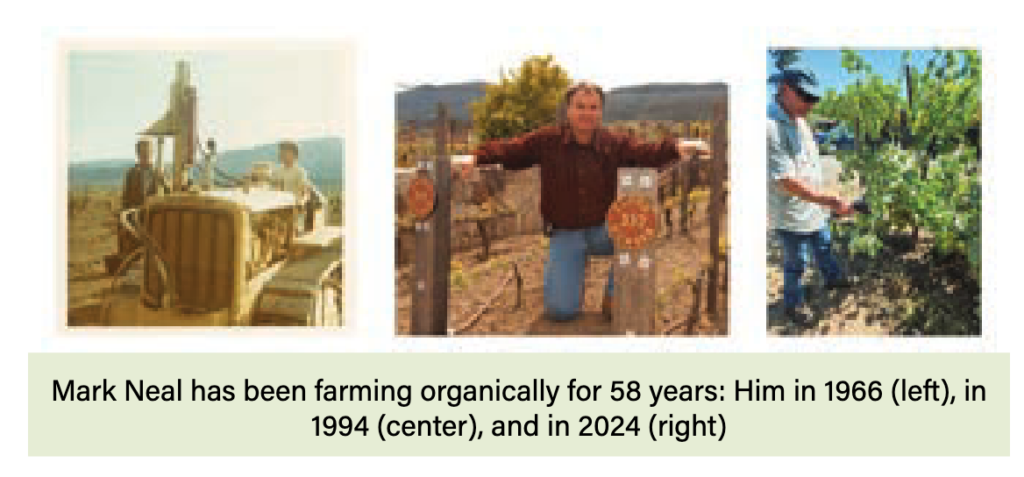Wine Business Monthly- Grapegrowing
November 1, 2024
A Q&A with Mark Neal
This forum features ways vintners, winemakers, growers and viticulturists evaluate and adopt new innovations to grow grapes and make wine-with a special focus on building climate resilience.
Who is Mark Neal?
ORGANIC AND BIODYNAMIC GROWER AND VINTNER: Mark Neal, owner, Jack Neal & Son Vineyard Management (est. 1968); grower and vintner for Neal Family Vineyards (est. 1998)
Second-generation grape grower Mark Neal grew up in Napa Valley, helping his Greek grandmother make compost for the family garden. He also assisted his father with tending and planting vineyards, during the transition from orchards and cattle to vineyards, starting in the late 1960s. For Neal, now 65, those were the beginnings of a long career in conscientious farming. He became an innovator in viticulture and green farming, leading by example on his own properties and others that he managed, including Martha’s Vineyard in Napa, the legendary site of Heitz Cellar’s most collectible wines since the 1960s.
He started working with his dad in 1968 at Jack Neal & Son Vineyard Management, which he now owns. There, Neal pioneered and popularized practices that have become standard in Napa Valley and beyond, including night harvesting, dual driplines for irrigation and converting vineyards to certified organic and certified Biodynamic status. In late 2022, his Howell Mountain estate winery, Neal Family Vineyards, became the first in Napa Valley to become certified by the Regenerative Organic Alliance.
What did you hope to gain from farming organically? Where did you find the greatest resistance?
“It always inspires me to work on vineyard innovations. Back in 1997, I was curious to make a white wine that can be estate-grown without using shade cloth. I came up with a system in ‘97. It’s not because I was listening to Al Gore [Inconvenient Truth] I was trying to figure out how to make sure that I developed a trellis system that shaded the climate underneath the canopy that would create its own microclimate, retain natural acid, natural shade to direct sun to avoid browning to the skins. This system works great, makes great wines and I sell fruit to high-end wineries from it. What I also learned was that sheer mass of canopy would be enough to create better soil heat conditions, keeping the soil about 20°F cooler on days with hot direct sunlight. We also created even higher SOM than in years past, and our carbon return is 3.5 times higher than UCD’s Oakville, using their numbers in regard to carbon sequestration. We wanted to make great wine; however, back then, whenever I did something differently, people would give me a bunch of shit. One of my first innovations was night harvesting that I started in the late 1970s. I started bringing in crews to harvest right after midnight. Not only does this keep the grapes nice and cool upon delivery to the winery, but the employees also don’t have to pick in the hot sun. We killed two birds with one stone.”

